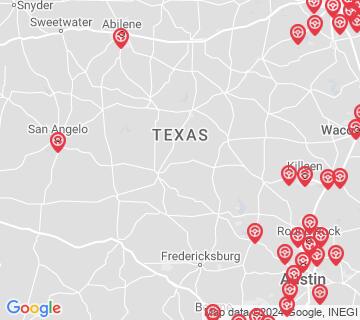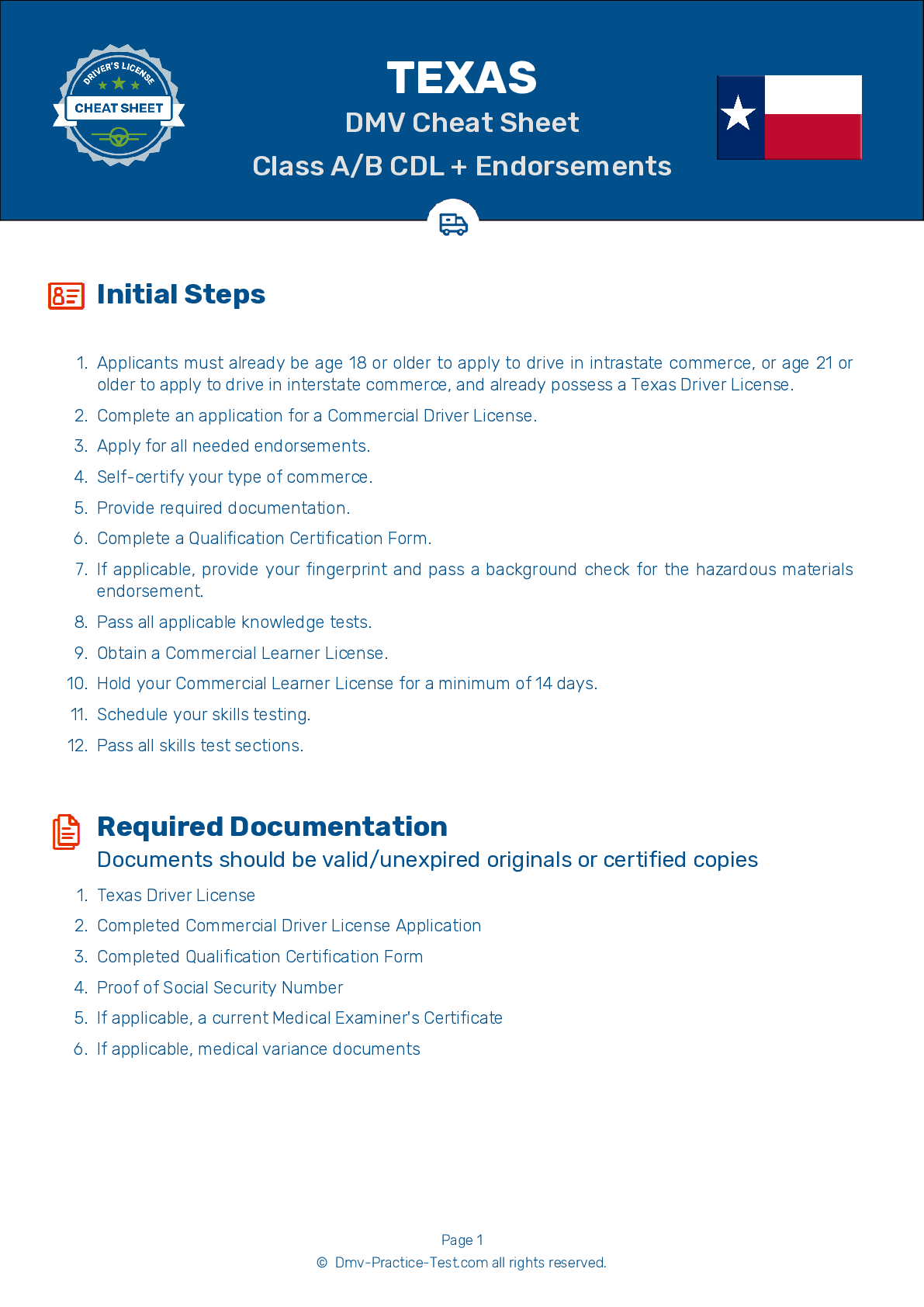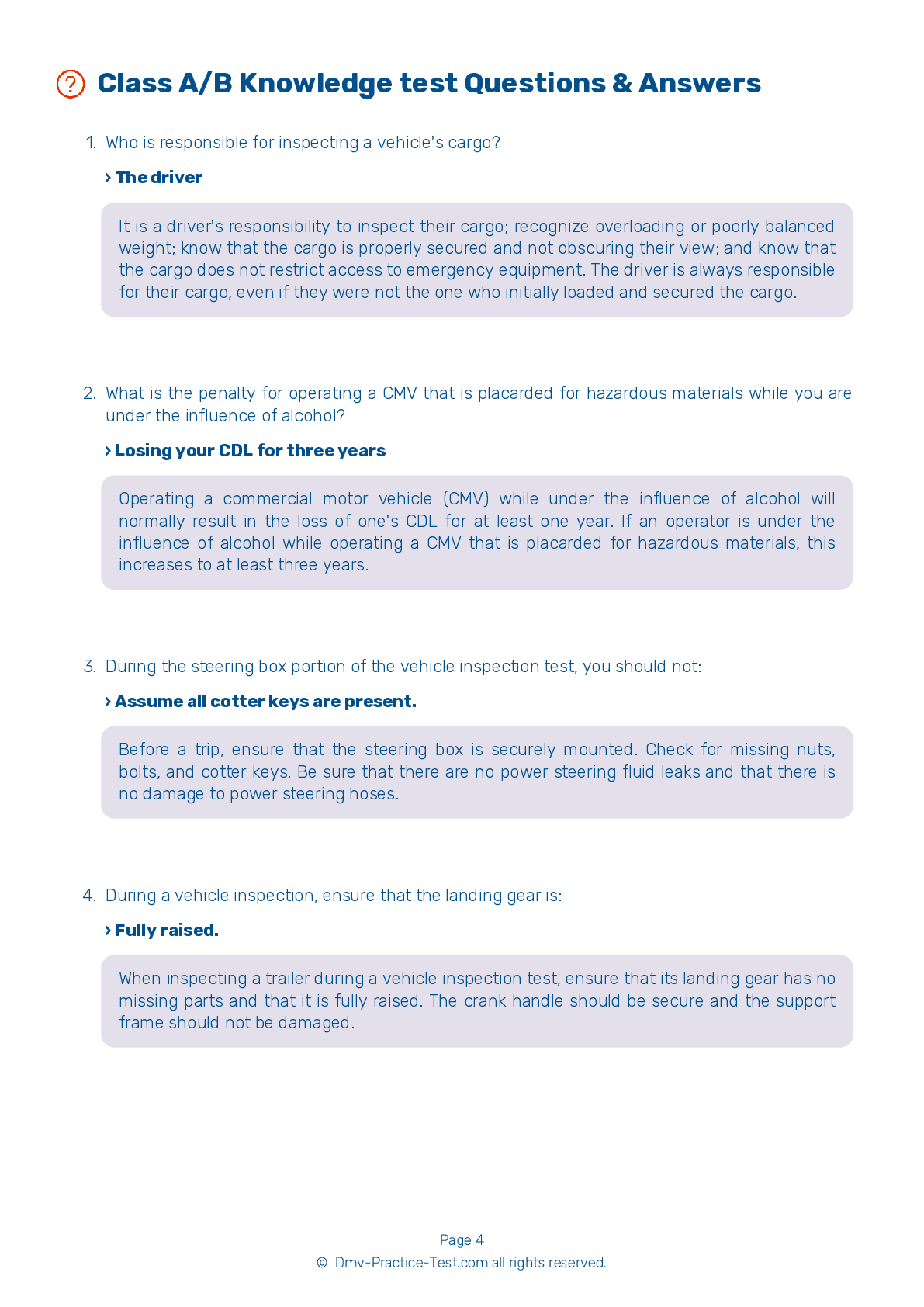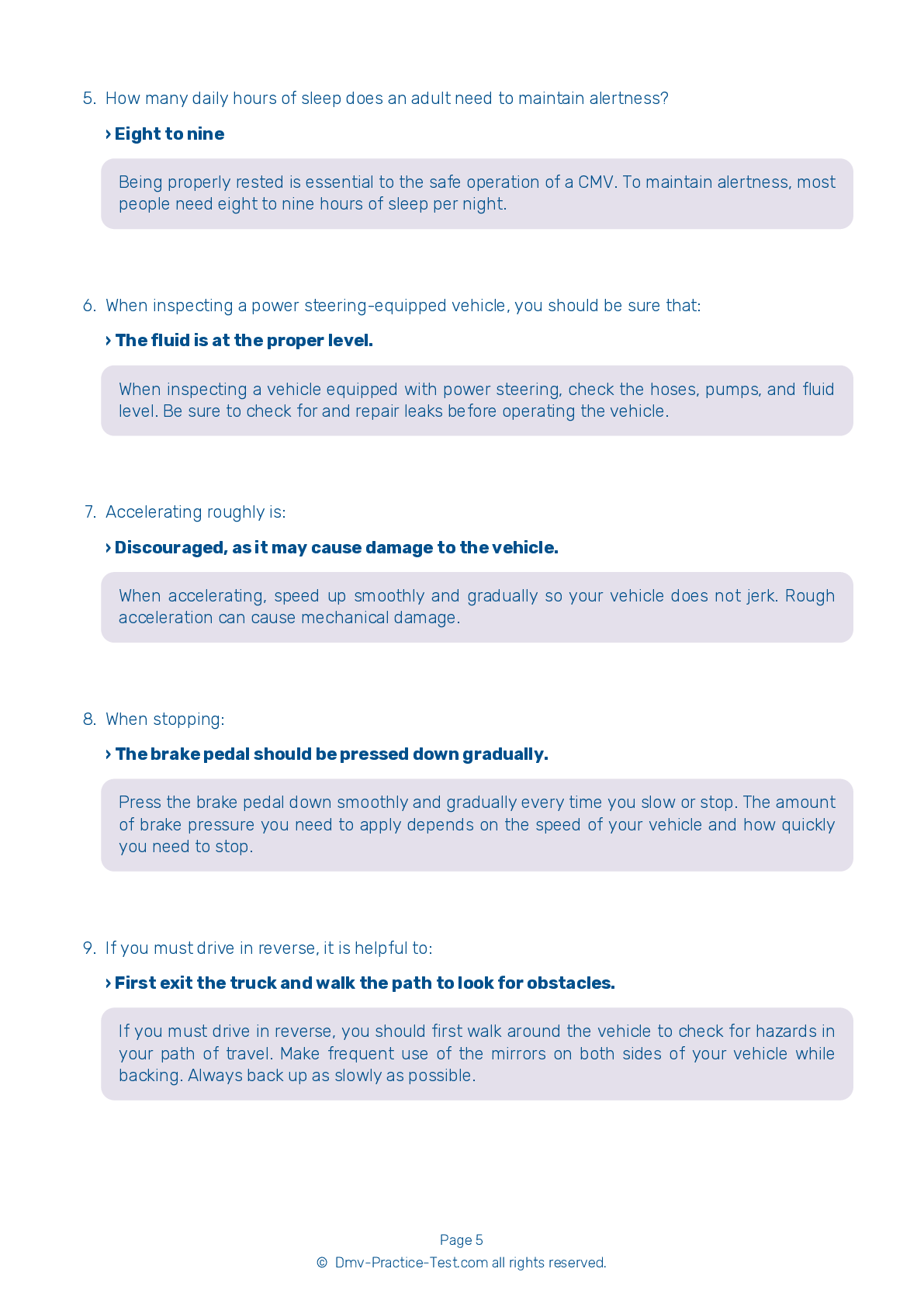HazMat #1
Hazmat Test | Texas 2026 #1 Page 5 of 5
On our website, we provide FREE practice - CDL hazmat test online! The official exam test consists of several obligatory parts, with all of them checking your knowledge of different blocks of road rules. If you need to obtain a TX CDL hazmat endorsement in 2026, practice as much as possible. Free sample tests published on our website will help you check and improve your knowledge and boost your grades. Please bear in mind that Texas requirements for issuing a hazmat endorsement for CDL may vary from those established in other states.
30
24
22
25 . When traveling with Division 1.1, 1.2, or 1.3 explosives, the vehicle should not be:
Parked on grass.
Except when parking briefly to perform necessary functions for vehicle operation (such as refueling), never park a vehicle carrying Division 1.1, 1.2, or 1.3 explosives within 300 feet of a bridge, tunnel, or building. Never park such a vehicle within five feet of the traveled portion of a road. Such vehicles should be parked only briefly.
26 . In the Hazardous Materials Table, Column 2 lists:
Materials' manufacturers.
Column 2 of the Hazardous Materials Table lists the proper shipping names and descriptions of regulated materials.
27 . After completing hazardous materials transportation training, drivers must have an understanding of:
The effects of relative humidity on hazardous materials.
All drivers must be trained in the security risks of hazardous materials transportation. This training must include an education on how to recognize and respond to possible security threats.
28 . To distinguish between hazardous and non-hazardous materials on a shipping paper:
The non-hazardous materials should be marked with an "X."
If a shipping paper includes information about both hazardous and non-hazardous materials, the hazardous materials must be differentiated in one of three ways. They must be listed first, highlighted in a contrasting color, or identified with an "X" placed before the shipping description in a column labeled "HM."
29 . How must a shipper notify a driver of the risks associated with their cargo?
By placing orange dots on packages
Shippers of hazardous cargo must alert drivers and others to relevant hazards through proper shipping papers, hazard warning labels on packages, emergency response information, and placards.
30 . Class 1, Class 2.1, and Class 3 items should not be placed in a trailer with:
Batteries.
The use of cargo heaters is not always permitted. When transporting materials that are categorized as Class 1 (Explosives), Class 2.1 (Flammable Gas), or Class 3 (Flammable Liquids) materials, heaters are generally prohibited.
Search the best driving school in your neighbourhood
2026 Texas | Frequently Asked Questions
A CDL Class A license in Texas permits drivers to operate any combination of vehicles with a Gross Combination Weight Rating (GCWR) of 26,001 pounds or more, provided the Gross Vehicle Weight Rating (GVWR) of the vehicle(s) being towed is over 10,000 pounds. It covers vehicles like tractor-trailers, truck and trailer combinations, and tank vehicles.
A Class A CDL license in Texas allows the holder to operate vehicles such as tractor-trailers, truck and trailer combinations, tank vehicles, livestock carriers, and flatbeds. These are typically vehicles with a Gross Combination Weight Rating (GCWR) of 26,001 pounds or more where the towed vehicle exceeds 10,000 pounds.
To obtain a Class A CDL license in Texas, you must be at least 18 years old (21 for interstate driving), possess a valid Texas driver's license, pass a vision exam, and successfully complete both a written knowledge test and a three-part skills test. Additionally, you must provide proof of citizenship or lawful presence and pass a medical examination.
In Texas, you must be at least 18 years old to qualify for a Class A CDL license for intrastate driving (within Texas only). However, to drive a commercial vehicle across state lines (interstate), federal regulations require drivers to be at least 21 years old.
Specific endorsements are not required for a Class A CDL license, but they can provide additional driving privileges. Endorsements include T for double/triple trailers, P for passenger vehicles, N for tank vehicles, H for hazardous materials, and S for school buses. Each endorsement requires passing additional written and/or skills tests.
The Class A CDL skills test in Texas includes three parts: a pre-trip vehicle inspection, a basic vehicle control test, and an on-road driving test. These are designed to assess your ability to safely operate and maintain a Class A commercial vehicle. The test must be taken in a vehicle representative of the one you'll be driving.
Yes, there can be limitations for Class A CDL license holders. These are called restrictions and are marked on the license. For example, if you cannot operate a manual transmission, you may have an automatic only restriction. If you don't pass the air brakes test, your license will show you're not permitted to drive vehicles with air brakes.
Yes, it is possible to take the written Class A CDL test in languages other than English in Texas. However, the Department of Public Safety recommends that applicants have a basic understanding of English due to the English Language Proficiency requirement, which mandates drivers understand traffic signs and signals in English.
Yes, you can request accommodations for the Class A CDL written test if you have a disability. Texas Department of Public Safety provides reasonable testing accommodations according to the Americans with Disabilities Act. However, you must provide adequate documentation of your disability and you may need to make the request in advance.
Yes, if you don't pass the Class A CDL written test in Texas, you can retake it. However, you must wait at least one day before retesting. If you fail the test three times, you are required to wait 30 days before retesting. After failing six times, you must wait 90 days. Each retake does require an additional fee.




